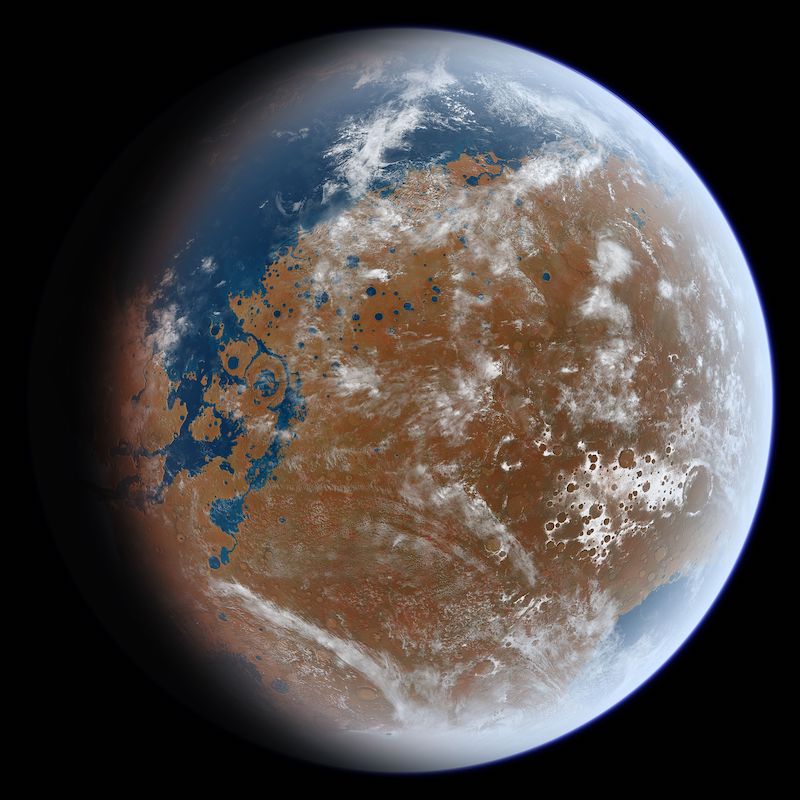Posted
by Paul Scott Anderson![]()
May 30, 2023

There has been growing evidence for an ancient ocean on Mars, in the northern hemisphere, as seen in this artist’s illustration. Now, China’s Zhurong rover has found what mission scientists say are marine sedimentary rocks. Image via Ittiz/ Wikipedia (CC BY-SA 3.0).
We know that Mars had rivers and lakes in the distant past. But what about oceans? There is indeed tentative evidence for an ancient ocean in the northern hemisphere. However, scientists have been debating that evidence for decades. But now, researchers in China and the U.S. say they have found new clues in marine sedimentary rocks in Utopia Planitia that may prove the existence of that ocean. China’s Zhurong rover discovered the sedimentary formations. The researchers announced the tantalizing findings in Science China Press on May 21, 2023.
Professor Long Xiao from the School of Earth Sciences at China University of Geosciences led the research team. The team published its accepted peer-reviewed paper in National Science Review on May 18, 2023. The paper, still undergoing final editing, is available as a PDF. (https://academic.oup.com/nsr/advance-article-pdf/doi/10.1093/nsr/nwad137/50285739/nwad137.pdf)
New evidence for ancient ocean on MarsChina’s Zhurong rover has been exploring its landing site on the southern edge of Utopia Planitia in the northern hemisphere of Mars. This is within the northern lowlands that some scientists say was likely once an ocean floor. The rover’s newest findings now bolster that possibility. The rover has been studying the rocks in the area with its multispectral camera (MSCam), and the science team says that Zhurong has found marine sedimentary rocks. While most other data supporting the ocean hypothesis has come from orbiting spacecraft, this new data is in situ (on site).
Decades of research using remotely-sensed data have extracted evidence for the presence of an ocean in the northern lowlands of Mars in the Hesperian, but these claims have remained controversial due to the lack of in situ analysis of the associated geologic unit, the Vastitas Borealis Formation (VBF). The Tianwen-1/Zhurong rover was targeted to land within the VBF near its southern margin and has traversed almost 1.2 miles (2 km) southward toward the interpreted shoreline. We report here on the first in situ analysis of the VBF that reveals sedimentary structures and features in surface rocks that suggest that the VBF was deposited in a marine environment, providing direct support for the existence of an ancient (Hesperian) ocean on Mars.
Multispectral images provide cluesZhurong has been gradually moving south toward what is thought to be an ancient coastline. The rover has taken 106 panoramic images so far during its travels. Mission scientists have been studying the multispectral images for clues about the rocks’ composition and origin. They found bedding structures that are different from the usual volcanic rock deposits on Mars.
In addition, they were different from rock formations created by blowing sand.
More information: Yang Liu et al, Zhurong reveals recent aqueous activities in Utopia Planitia, Mars, Science Advances (2022). DOI: 10.1126/sciadv.abn8555
Journal information: Science Advances